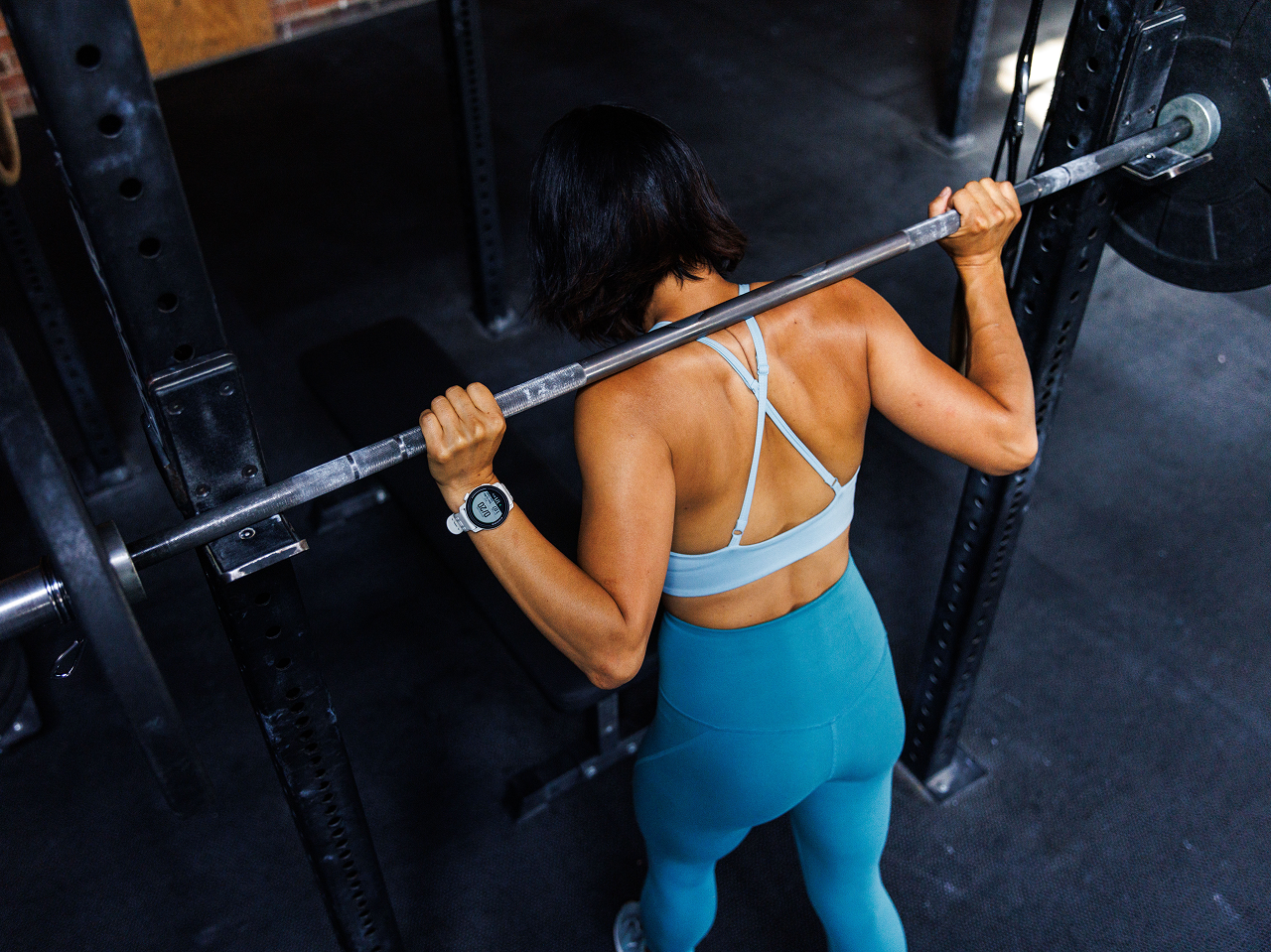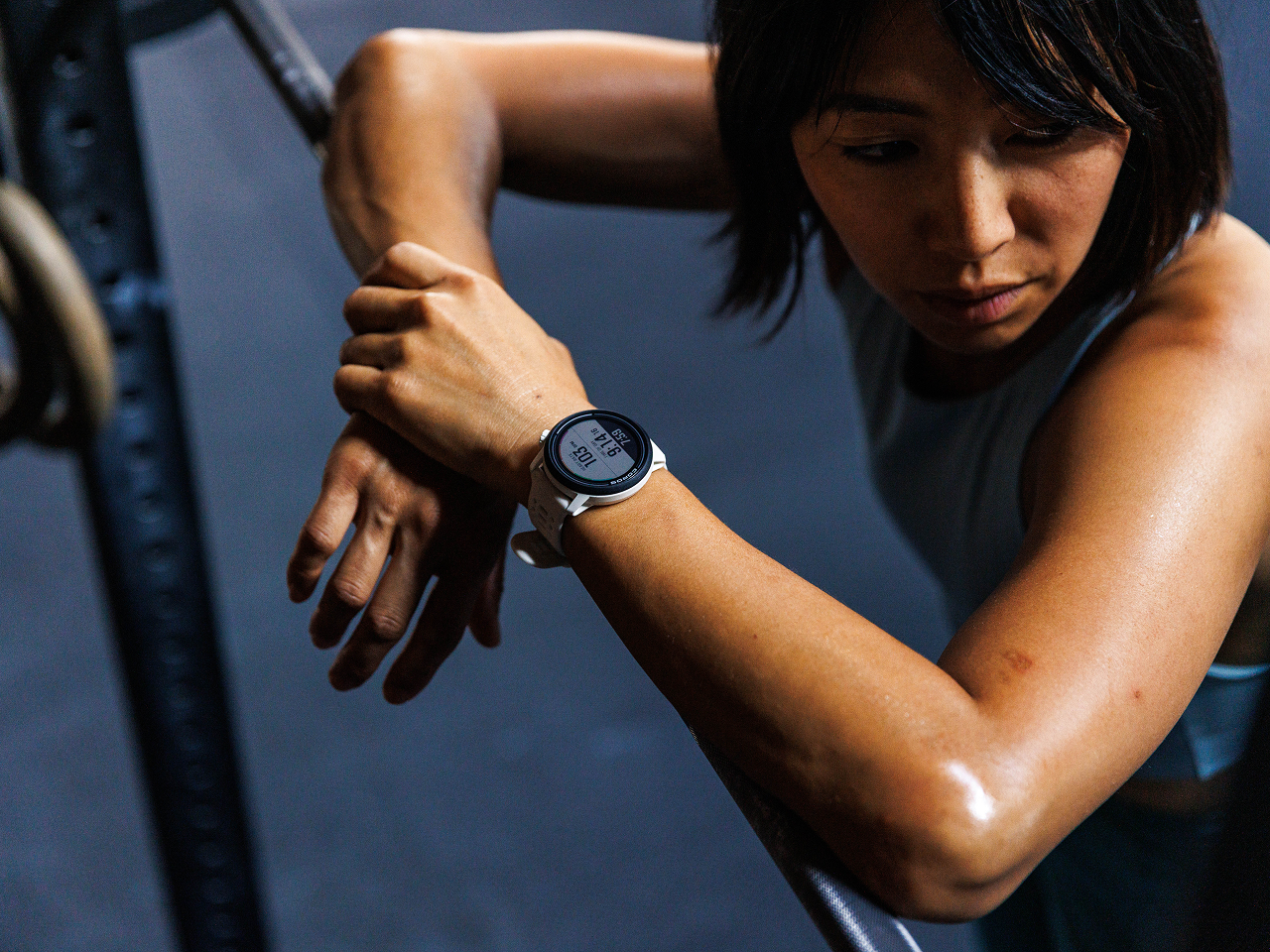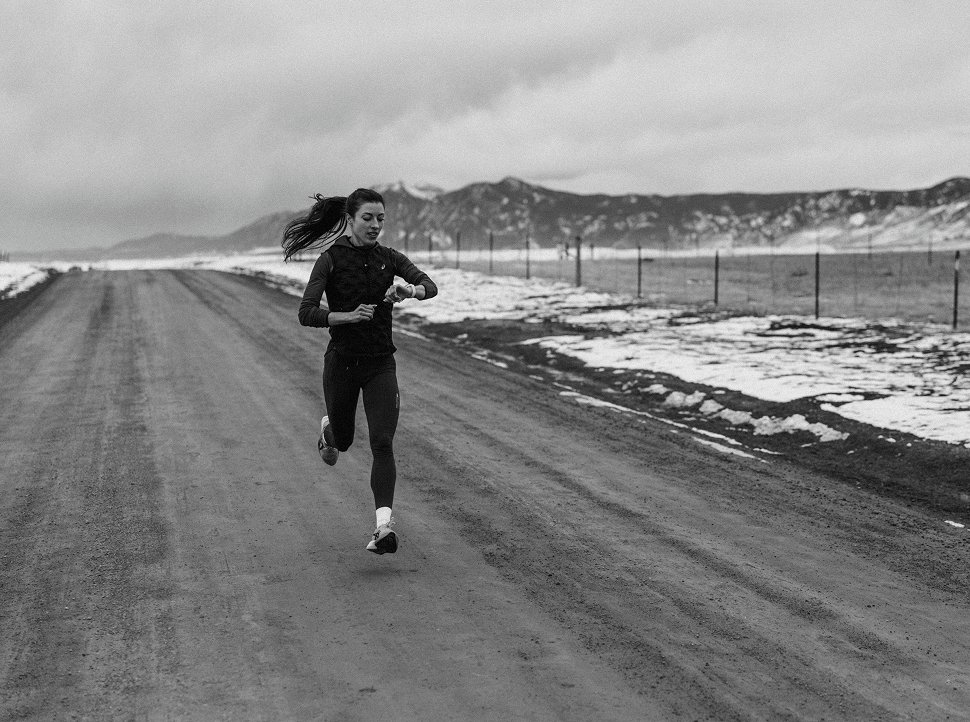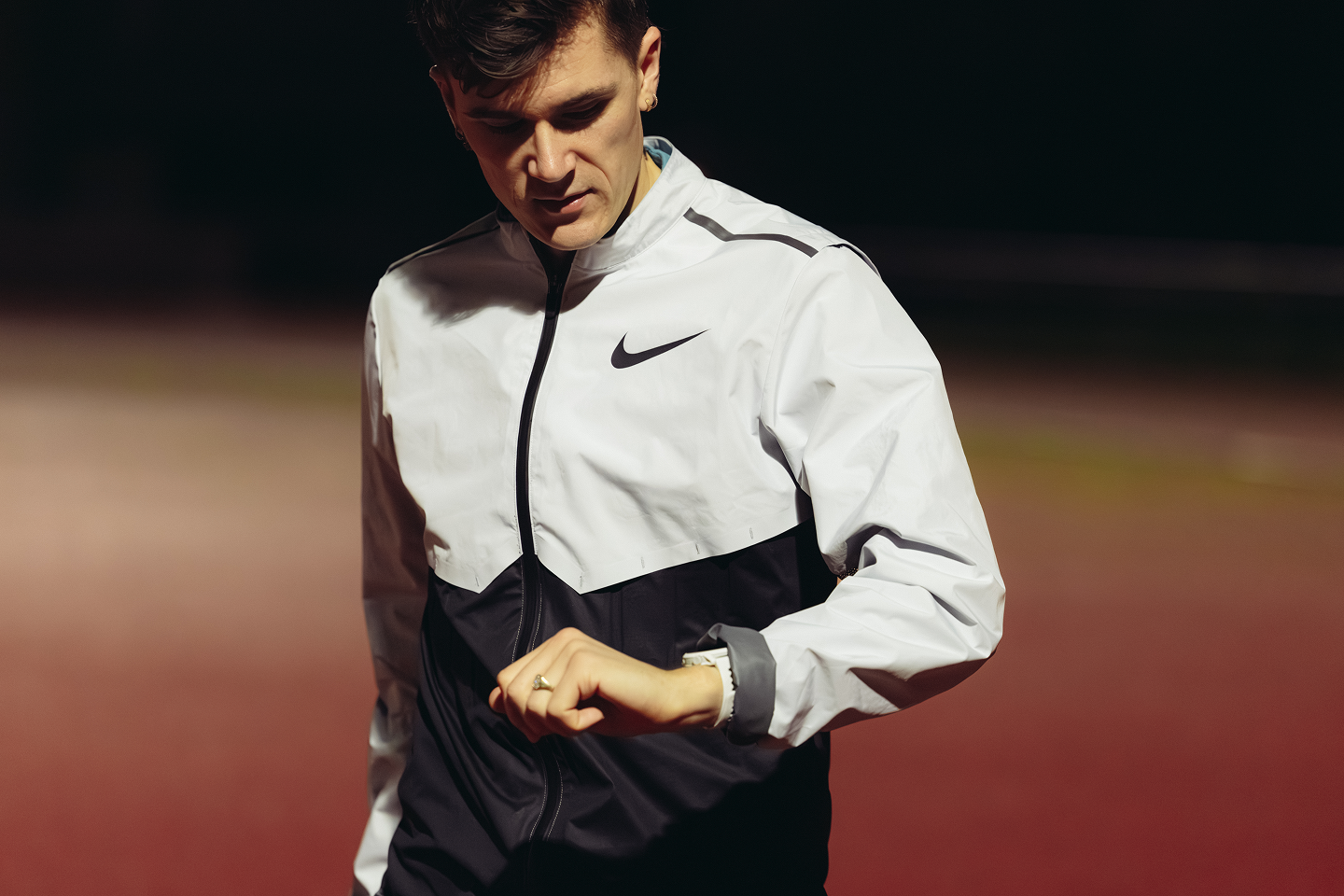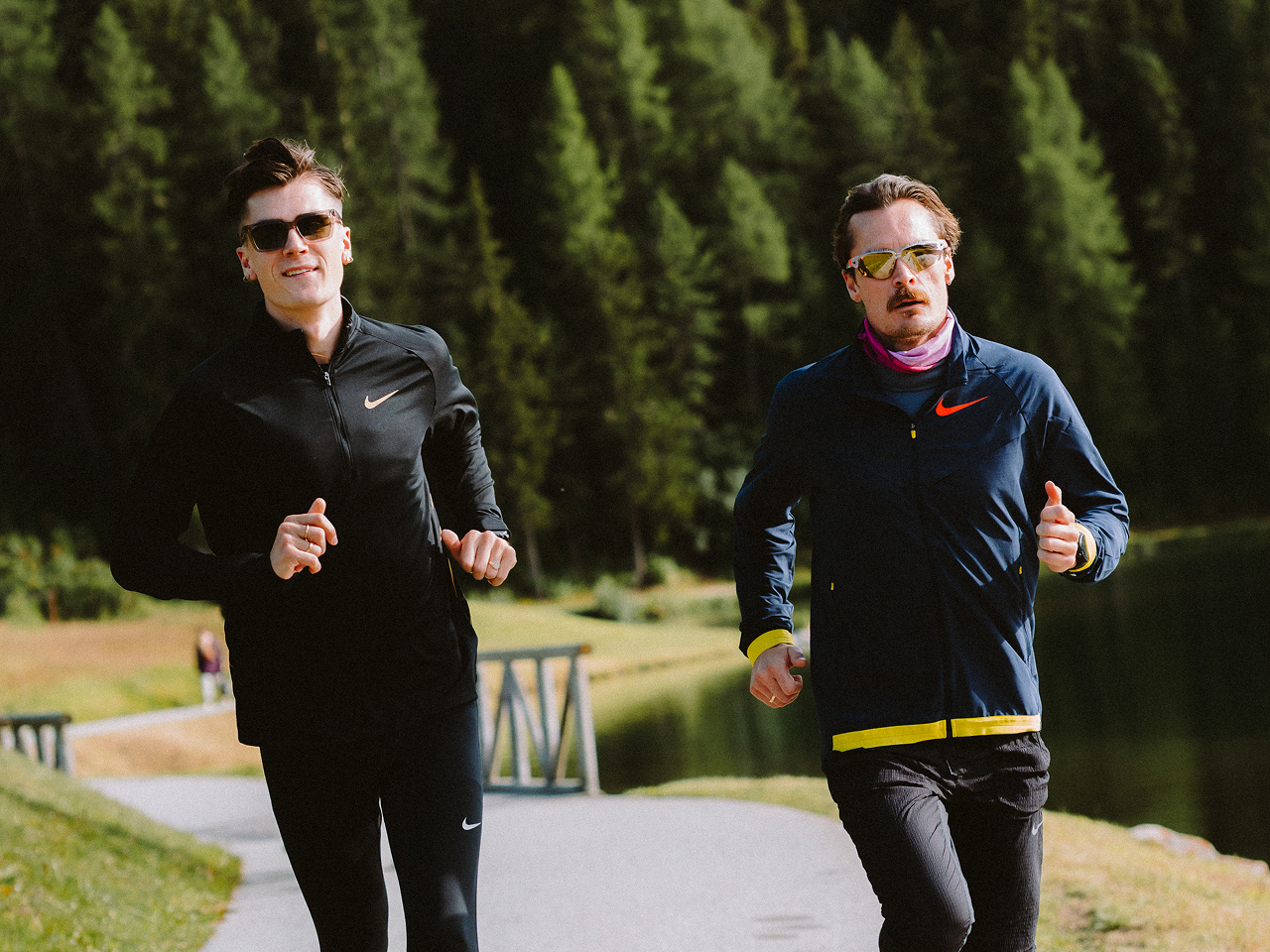Warming up is the critical launching point of every workout. Without a proper warm-up, you start an activity with a limited range of motion and an inactive cardiovascular system. This leads to underperforming and increases the risk of injury. Read below as we outline how you can appropriately prepare for any workout and perform to your potential.
What is a Warm-Up Supposed to Do?
The purpose of a warm-up is to gradually increase physical activity so your body can activate the systems that support performance. Your body isn't built to jump from rest to peak effort instantly. The body is efficient, only ramping up what it needs, when it needs it. A proper warm-up gives your body time to:
- Increase heart rate
- Increase blood pressure
- Increase blood vessel size
- Increase breathing rate
Together, these changes help deliver more oxygen to your working muscles. At the same time, your muscles are contracting and producing heat - hence the name "warm-up." As muscle temperature rises slightly (but not excessively), flexibility improves. Warmer muscles stretch and contract more efficiently, reducing injury risk and helping you move more fluidly into your session.
Dynamic Warm Up Exercises
Before a workout, dynamic stretching is your go-to. These are movement-based exercises that take your joints through a full range of motion while activating the muscles you'll use during your session. Think walking lunges, hip openers, leg swings, or high knees.
These are low-intensity movements that will increase blood flow, improve mobility, and prepare your nervous system for the higher-intensity movements to come.
COROS Coaches have designed a sample Dynamic Warm-Up that you can download from our official Workout Library.
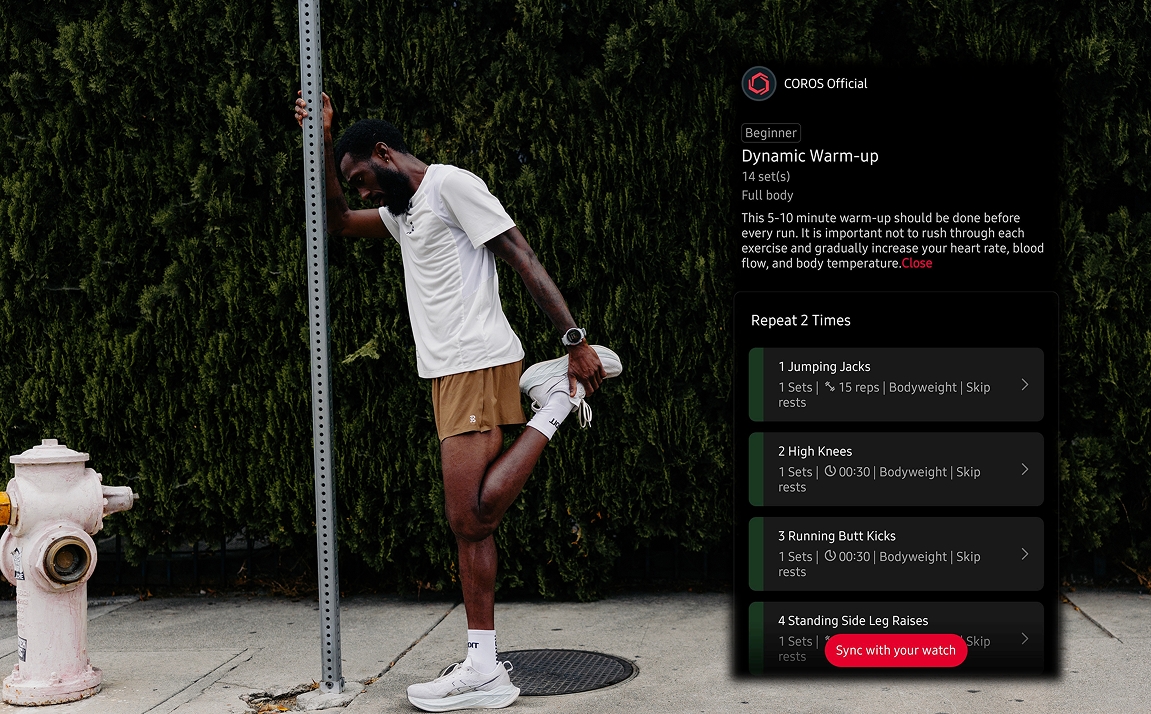
Static stretching (holding a stretch for 10-60 seconds) does the opposite. It relaxes the muscle and can temporarily reduce strength and power. That's why static stretching is better placed after your session.
Make It Specific
One key principle for warming up is specificity. As you move closer to the main session, your warm-up should begin to mirror the movements and intensity of your actual workout. While most warm-ups may start the same (ex. dynamics or light jogging), they should branch out depending on whether you're heading into a heavy lift, a track session, or a long run.
To apply this, start with general movement to increase body temperature and circulation. Then, layer in elements that match your upcoming session. For example:
- Runners preparing for intervals might increase their pace at the end of the warm-up jog, or include a few short strides at target pace.
- If you're heading to the gym, your final warm-up sets should mirror the movement pattern and load of your first working set.
- Before a long run, easing into your training pace over the first few miles can serve as a continuation of the warm-up itself.
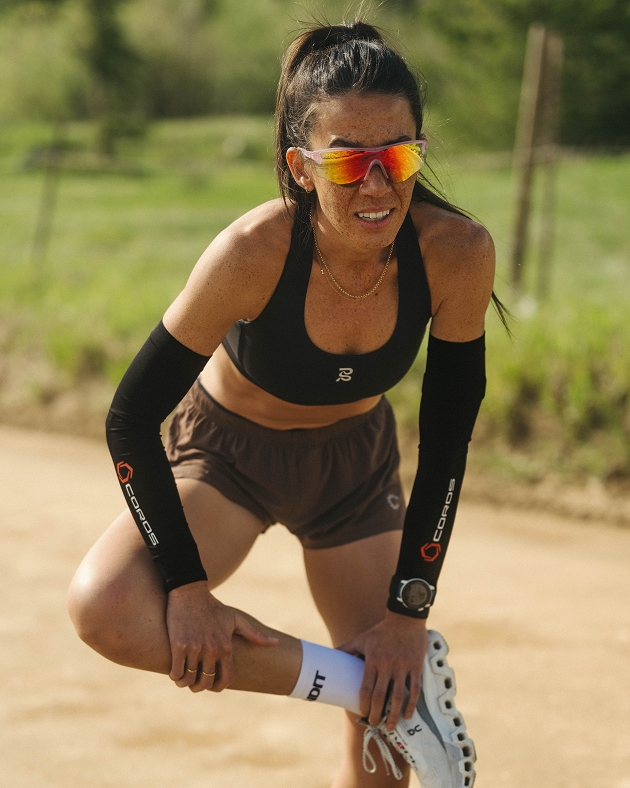
Use your COROS watch to monitor pace and heart rate during this phase to ensure you're building up gradually without overshooting early.
What About Cool Downs?
After the main session is complete, it’s time to reverse the process. Stopping suddenly can cause blood to pool in your legs, which may lead to dizziness or lightheadedness. Without a gradual cool down, waste products from exercise linger longer in the muscles, and your body misses a chance to activate the systems that begin recovery. Your heart rate stays elevated longer, and your muscles remain tense instead of easing back into a resting state.
To cool down properly, continue moving at a decreasing intensity for 5 to 10 minutes. This will differ depending on how intense the session was.
- After a track session, you might start with a pace in Zone 2, then progressively ease down over several minutes.
- After a steady long or easy run, a few minutes of walking may be the best transition.
- If you've just finished a lift, your cool down might consist of light mobility or targeted static stretching.
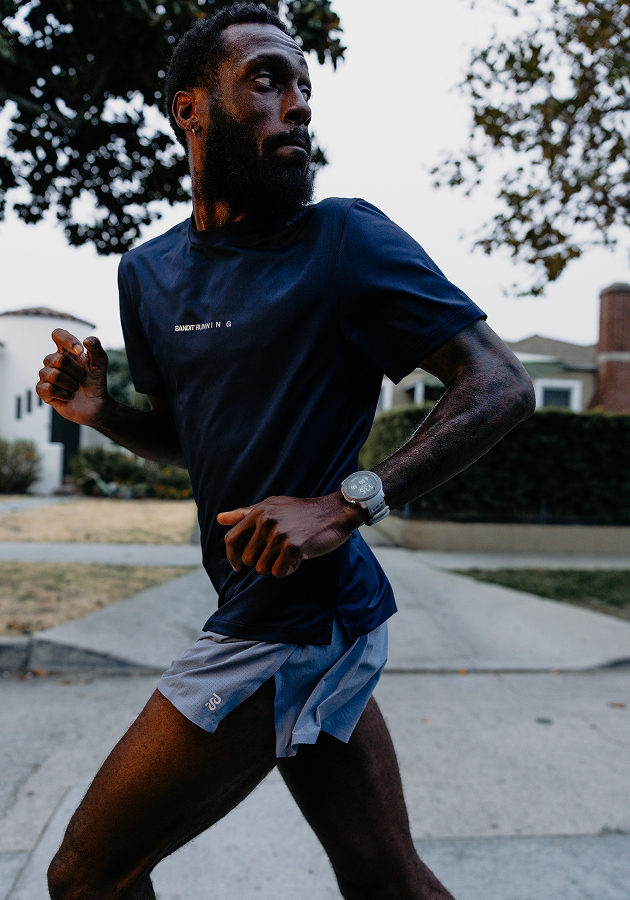
Whatever the activity, the goal is the same: guide the body back toward rest, support circulation, and start the recovery process.
Once your heart rate has come down, check in with your COROS metrics like Recovery Time or Training Load to see what your next steps will look like as you enter into the recovery side of training.

/filters:quality(90)/fit-in/970x750/coros-web-faq/upload/images/ec03065b45a88f79dbb0a36cbd26b4e8.png)
